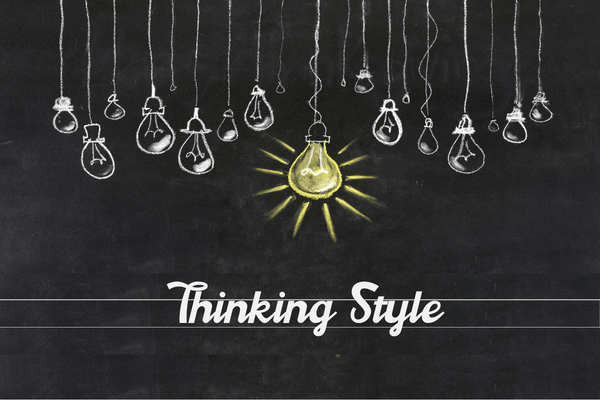You can sign up to our LinkedIn newsletter here
Within the AQAI framework one dimension is Character. Character is a way that you can understand how people are motivated best in the context of change. In this article we are going to look at what the Character of Thinking Style means and how it can affect your organisation.
Big Pictures versus Details
Thinking Style is assessed as a place between two poles. At one extreme is Big Pictures. People with Big Pictures will see the forest rather than the trees. Their Thinking Style is broad, general and focused on the primary outcome of a goal. For example, if they are asked to prepare a presentation, they might see their task as educating the audience about a topic rather than making slides and talk about content. They will often try to connect the dots between their various roles and responsibilities and want to create an overarching job definition. When interacting with others, they are more likely to give ambiguous instructions or overstep boundaries in their attempts to address broad objectives. They are motivated by grasping the Big Pictures.
At the other end of the spectrum, are those with the Details Thinking Style. For these people they see the trees and generally make sense of their work by appreciating the hidden details in the picture. They may overlook the forest. They want to understand the specific detail of something and focus on concrete processes or steps towards achieving a goal. They may want to separate the various roles and responsibilities and address each separately. When they work with others, they want to make sure their peers are aware of the necessary concrete steps to achieve a goal and the risk is they’ll get lost in the details or be perceived as micromanaging.
Implications for Leaders
How do you, as a leader, engage with people who are at either end of the spectrum? Well, one of the keys is to identify the neutrals. People who are mid-range make great project facilitators. They are able to dance while keeping an eye on the prize and planning the steps. Often, they can help you to mediate between the Big Pictures people and the Details people. You need to recognise that those who care about the Details will be motivated to change when they understand all the steps. Whereas the Big Pictures people will be motivated for change when they understand the big, broad picture. If you try to engage the Big Pictures people to motivate and change by telling them all the little things that will enable that to happen, they will not be excited. If you try to motivate the Details people by telling the big overarching goal they will not be able to engage until they understand the detail.
It is crucial, as you engage with your teams to help them to respond to change, to adapt your own way of engaging them to reflect the different Thinking Style preferences of different people within your team and to recognise those in the neutral area as advocates that can support people in that change.
Conclusions
Understanding the Thinking Style of different team members and recognising that different teams will be weighted with a different balance of Thinking Style between Big Pictures and Details, will help you to plan appropriate communications for different groups. Too often leaders have a natural personal preference for Big Pictures and they focus on the visionary transformation for the organisation as a whole. They risk losing the Details members of their teams who want to understand both the steps to the new vision and what it means for them personally on a day-to-day level. The Big Pictures Thinking Style may respond with ‘Good’ whereas the Details Thinking Style will respond with ‘But how?’.

Charles McLachlan is the founder of FuturePerfect and on a mission to transform the future of work and business. The Portfolio Executive programme is a new initiative to help executives build a sustainable and impactful second-half-career. Creating an alternative future takes imagination, design, organisation and many other thinking skills. Charles is happy to lend them to you.
